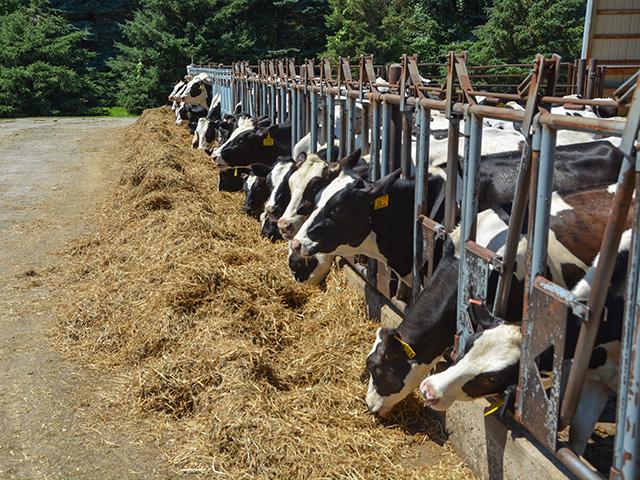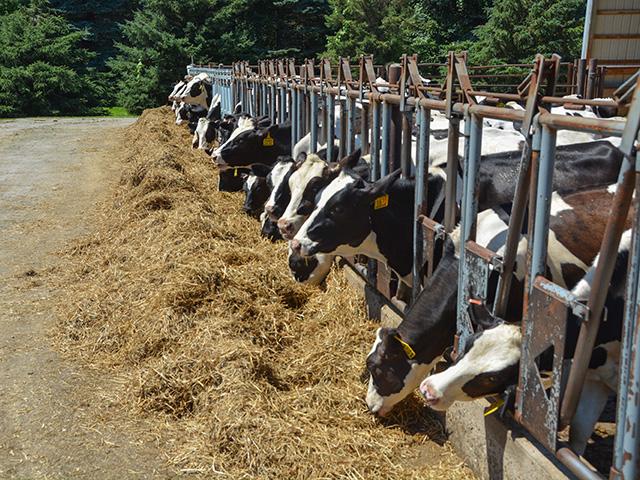Ag Policy Blog
USDA Offers Dairy Farmers H5N1 Testing Pilot as CDC Reports Another Infected Worker
OMAHA (DTN) --- USDA is spending another $824 million to respond to the H5N1 avian influenza outbreak, including funds to develop a vaccine and create a pilot project to encourage more dairy farmers to test their milk for the H5N1 avian influenza virus.
The $824 million will come from USDA's Commodity Credit Corp. and go mainly to the Animal and Plant Health Service (APHIS) to continue work on the H5N1 virus and help more rapidly identify cases of H5N1 in livestock and poultry. Funding will help with diagnostic and field responses, as well as surveillance for both livestock and wildlife.
Some of the funding also will be used by the Agricultural Research Service (ARS) to develop vaccines for highly pathogenic avian influenza in cattle, turkey, pigs and goats.
At least some funding also will go to the USDA Food Safety and Inspection Service for food testing and studies as well.
NEW PILOT PROGRAM FOR DAIRIES
Along with the funding, USDA is creating a pilot program that would designate dairy farms as "negative status" that have tested negative for the virus three weeks in a row using "on-farm bulk milk" or similar milk samples. Herds that continue testing negative for the virus weekly from their bulk tanks will be allowed to move lactating cows across state lines without specifically testing those individual cows. Currently, USDA requires individual lactating cows to be tested for the virus before they can cross state lines.
"The main benefit for farmers who choose to enroll in the H5N1 dairy herd status program is that once they can demonstrate their herds are free of H5N1, they will be able to ship their cows at any time they prefer without testing individual animals, known that their herd is free of the disease," said Eric Deeble, deputy assistant secretary at USDA for congressional affairs, and an acting senior advisor for HPAI.
The voluntary pilot testing program will start next week. Deeble said, "and we have a great deal of interest from a number of states."
More testing, however, also is likely to lead to more herds testing positive for the virus as well.
"USDA anticipates that we may see an increase in the number of herds that are testing positive. This will add to our knowledge of the disease and how it spreads between herds and asymptomatic animals," Deeble said.
P[L1] D[0x0] M[300x250] OOP[F] ADUNIT[] T[]
Deeble stressed the new program doesn't mean USDA is loosening restrictions on movement but offers dairy farmers more certainty that their cows are not infected while providing USDA more visibility on the status of dairy herds due to ongoing tests.
"We want to encourage more testing in every way we can," Deeble said.
FSIS also has tested 109 meat samples from condemned dairy cows not allowed to enter the food supply. Meat from one condemned cow tested positive for H5N1.
THIRD WORKER INFECTED
Officials in Michigan and the Centers for Disease Control and Prevention (CDC) on Thursday reported that a third dairy worker had tested positive for the H5N1 virus. The infected worker is the Michigan dairy worker in as many weeks to test positive for the virus and the third person overall since the outbreak among dairy cattle began at the end of March.
The current victim of the virus, though, came down with respiratory symptoms, including coughing, a sore throat and watery eyes. The victim has been given Tamiflu and is recovering.
CDC officials said they were expecting to see more human cases and some people encounter respiratory problems. The risk to people remains low, but there is a higher risk for workers at dairies that they could become infected.
"Respiratory symptoms increase the odds of exposing someone else to the virus," Nirav Shah, director of the National Center for Immunization and Respiratory Diseases. "For that reason, we should remain alert, not alarmed."
Shah added, "While the risk to the general public remains low, there is a vector here."
Dairy workers who have close, prolonged and unprotected exposure to cows that are infected are at greater risk and "ought to take precautions to take care of themselves," Shah said.
USDA and the CDC have offered options to dairy farms to provide personal protective equipment (PPE) to dairy farms, but there have been complaints and concerns about wearing PPC while working on a farm in warmer weather.
TESTING NUMBERS
USDA has run more than 26,000 tests on cows over the past month at the National Animal Health Laboratory Network (NAHLN) and National Veterinary Services Laboratories (NVSL). That includes 2,462 lactating cows that were tested because producers wanted to ship those cows across state lines.
Still, despite a strong emphasis on testing, Deeble said he could provide an estimate on the number of total cows that have tested positive for the virus.
As of Thursday afternoon, USDA has reported 67 dairies with infected cattle across nine states. The state most impacted now is Michigan where 22 dairy herds have tested positive.
The CDC has tested more than 40 people for the virus. There are 300 other people -- almost all dairy workers -- that have been enrolled in a monitoring program, including 220 workers in Michigan.
Poultry farms also continue to be hit, though there are fewer reports of major commercial operations being affected than a year ago. An Iowa commercial egg-laying operation with 4.2 million chickens was confirmed as infected on Tuesday, meaning those chickens will be euthanized. A Minnesota egg-laying operation last week with 1.37 million birds also was infected.
Unlike poultry, dairy cows that have tested positive largely show mild signs of the virus and recover in a couple of weeks.
Chris Clayton can be reached at Chris.Clayton@dtn.com
Follow him on social platform X @ChrisClaytonDTN
(c) Copyright 2024 DTN, LLC. All rights reserved.






Comments
To comment, please Log In or Join our Community .